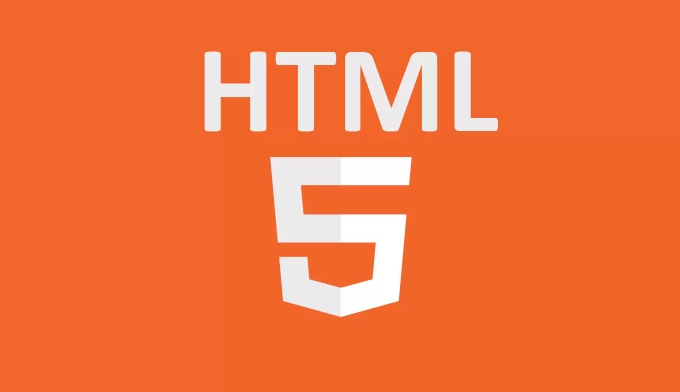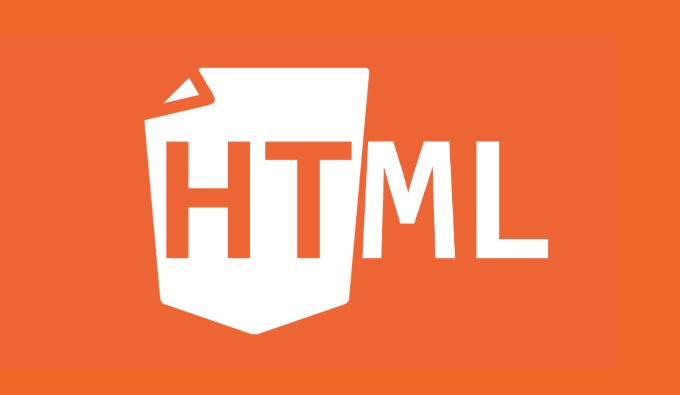AR.js is a lightweight open source AR framework based on web technology. Users can experience AR content through their browser without installing an app. It uses HTML5 and JavaScript to combine A-Frame or Three.js to render 3D scenes, and realizes image recognition and overlay through the camera, supporting image recognition, position positioning and other functions. You can quickly start using the following steps: 1. Introduce the JS library of A-Frame and AR.js; 2. Create the basic A-Frame scene and embed the AR configuration; 3. Use Hiro images as the default identification mark to test the effect. Frequently asked questions include that the camera cannot be accessed and requires HTTPS and permissions to check. It is recommended to use high contrast diagrams and keep the light good. Custom recognition diagrams need to be trained to generate .patt files and referenced in the code. AR.js is widely used in scenarios such as educational three-dimensional model display, e-commerce trial-on, exhibition guides, etc. You can scan the QR code and use it with just a QR code link. It is suitable for marketing, education and interactive web design.

AR.js is a lightweight, open source augmented reality (AR) framework that is especially suitable for quickly building AR experiences in H5 pages. It is based on web technology and does not require the installation of an app. Users can directly experience AR content through their mobile browser. It is very suitable for marketing activities, educational presentations and interactive web design.

What is AR.js?
The core of AR.js is to use HTML5 and JavaScript to achieve augmented reality effects in the browser. It relies on WebGL frameworks such as A-Frame or Three.js to render 3D content, and combines camera input to achieve real-time image recognition and overlay.
Its advantages are:

- Fully open source, free to use
- No native app required, compatible with mainstream mobile browsers
- Lightweight, fast loading
- Supports AR functions such as image recognition, position positioning, etc.
How to start a simple AR project?
If you are a front-end developer and want to get started with AR.js quickly, you can follow the following steps:
-
Introduce necessary libraries

<script src="https://aframe.io/releases/1.2.0/aframe.min.js"></script> <script src="https://cdn.jsdelivr.net/npm/ar.js@3.4.2/aframe/build/aframe-ar.min.js"></script>
Create a basic A-Frame scenario
<body style='margin: 0; overflow: hidden;'> <a-scene embedded arjs='sourceType: webcam; debugUIEnabled: false;'> <a-marker preset='hiro'> <a-box position='0 0.5 0' material='color: red;'></a-box> </a-marker> <a-entity camera></a-entity> </a-scene> </body>Using Hiro Images as recognition mark This is a built-in test image that you can print out or display with your phone, and aim at the camera to see the red cube floating on it.
This is the most basic example. After running it, you can see a simple AR effect. If you want to develop further, it is recommended to build a server locally or use GitHub Pages to deploy.
FAQs and Optimization Suggestions
? The camera is inaccessible?
Make sure the page uses the HTTPS protocol and that the user has authorized camera permissions. Some browsers may not support device access with non-secure contexts.
? Is AR content recognition unstable?
- Use high contrast marker images, such as black and white patterns
- Keep ambient light sufficient to avoid reflection or blur
- If using a custom marker, remember to train the model and generate the corresponding pattern file
? What should I do if I want to customize the recognition diagram?
AR.js supports the use of custom images as markers. You need to train the image using the tools provided by ARToolKit , then export the .patt file and reference it in the code:
<a-marker type='pattern' url='custom-marker.patt'> <!-- your 3D object here --> </a-marker>
Examples of practical application scenarios
AR.js is widely used:
- Educational field: Displaying three-dimensional anatomical model or chemical structure
- E-commerce marketing: Let users "try on" glasses, hats and other products
- Exhibition guide: Scan the exhibits to trigger information pop-up window or animation explanation
All these scenarios only require a QR code link, and users can scan the code to use it, which greatly reduces the threshold for use.
Basically that's it. It is not difficult to get started with AR.js, but to adjust the details and make the recognition more stable, more practice is still needed. If you have specific scenario needs, you can also refer to official documents or community resources to continue in-depth.
The above is the detailed content of Building H5 Augmented Reality Experiences with AR.js. For more information, please follow other related articles on the PHP Chinese website!

Hot AI Tools

Undress AI Tool
Undress images for free

Undresser.AI Undress
AI-powered app for creating realistic nude photos

AI Clothes Remover
Online AI tool for removing clothes from photos.

Clothoff.io
AI clothes remover

Video Face Swap
Swap faces in any video effortlessly with our completely free AI face swap tool!

Hot Article

Hot Tools

Notepad++7.3.1
Easy-to-use and free code editor

SublimeText3 Chinese version
Chinese version, very easy to use

Zend Studio 13.0.1
Powerful PHP integrated development environment

Dreamweaver CS6
Visual web development tools

SublimeText3 Mac version
God-level code editing software (SublimeText3)

Hot Topics
 Adding drag and drop functionality using the HTML5 Drag and Drop API.
Jul 05, 2025 am 02:43 AM
Adding drag and drop functionality using the HTML5 Drag and Drop API.
Jul 05, 2025 am 02:43 AM
The way to add drag and drop functionality to a web page is to use HTML5's DragandDrop API, which is natively supported without additional libraries. The specific steps are as follows: 1. Set the element draggable="true" to enable drag; 2. Listen to dragstart, dragover, drop and dragend events; 3. Set data in dragstart, block default behavior in dragover, and handle logic in drop. In addition, element movement can be achieved through appendChild and file upload can be achieved through e.dataTransfer.files. Note: preventDefault must be called
 Getting user location with HTML5 geolocation API
Jul 04, 2025 am 02:03 AM
Getting user location with HTML5 geolocation API
Jul 04, 2025 am 02:03 AM
To call GeolocationAPI, you need to use the navigator.geolocation.getCurrentPosition() method, and pay attention to permissions, environment and configuration. First check whether the browser supports API, and then call getCurrentPosition to obtain location information; the user needs to authorize access to the location; the deployment environment should be HTTPS; the accuracy or timeout can be improved through configuration items; the mobile behavior may be limited by device settings; the error type can be identified through error.code and given corresponding prompts in the failed callback to improve user experience and functional stability.
 Using ARIA attributes with HTML5 semantic elements for accessibility
Jul 07, 2025 am 02:54 AM
Using ARIA attributes with HTML5 semantic elements for accessibility
Jul 07, 2025 am 02:54 AM
The reason why ARIA and HTML5 semantic tags are needed is that although HTML5 semantic elements have accessibility meanings, ARIA can supplement semantics and enhance auxiliary technology recognition capabilities. For example, when legacy browsers lack support, components without native tags (such as modal boxes), and state updates need to be dynamically updated, ARIA provides finer granular control. HTML5 elements such as nav, main, aside correspond to ARIArole by default, and do not need to be added manually unless the default behavior needs to be overridden. The situations where ARIA should be added include: 1. Supplement the missing status information, such as using aria-expanded to represent the button expansion/collapse status; 2. Add semantic roles to non-semantic tags, such as using div role to implement tabs and match them
 Securing HTML5 web applications against common vulnerabilities
Jul 05, 2025 am 02:48 AM
Securing HTML5 web applications against common vulnerabilities
Jul 05, 2025 am 02:48 AM
The security risks of HTML5 applications need to be paid attention to in front-end development, mainly including XSS attacks, interface security and third-party library risks. 1. Prevent XSS: Escape user input, use textContent, CSP header, input verification, avoid eval() and direct execution of JSON; 2. Protect interface: Use CSRFToken, SameSiteCookie policies, request frequency limits, and sensitive information to encrypt transmission; 3. Secure use of third-party libraries: periodic audit dependencies, use stable versions, reduce external resources, enable SRI verification, ensure that security lines have been built from the early stage of development.
 Integrating CSS and JavaScript effectively with HTML5 structure.
Jul 12, 2025 am 03:01 AM
Integrating CSS and JavaScript effectively with HTML5 structure.
Jul 12, 2025 am 03:01 AM
HTML5, CSS and JavaScript should be efficiently combined with semantic tags, reasonable loading order and decoupling design. 1. Use HTML5 semantic tags, such as improving structural clarity and maintainability, which is conducive to SEO and barrier-free access; 2. CSS should be placed in, use external files and split by module to avoid inline styles and delayed loading problems; 3. JavaScript is recommended to be introduced in front, and use defer or async to load asynchronously to avoid blocking rendering; 4. Reduce strong dependence between the three, drive behavior through data-* attributes and class name control status, and improve collaboration efficiency through unified naming specifications. These methods can effectively optimize page performance and collaborate with teams.
 Using HTML5 Semantic Elements for Page Structure
Jul 07, 2025 am 02:53 AM
Using HTML5 Semantic Elements for Page Structure
Jul 07, 2025 am 02:53 AM
Using HTML5 semantic tags can improve web structure clarity, accessibility and SEO effects. 1. Semantic tags such as,,,, and make it easier for the machine to understand the page content; 2. Each tag has a clear purpose: used in the top area, wrap navigation links, include core content, display independent articles, group relevant content, place sidebars, and display bottom information; 3. Avoid abuse when using it, ensure that only one per page, avoid excessive nesting, reasonable use and in blocks. Mastering these key points can make the web page structure more standardized and practical.
 HTML5 video not playing in Chrome
Jul 10, 2025 am 11:20 AM
HTML5 video not playing in Chrome
Jul 10, 2025 am 11:20 AM
Common reasons why HTML5 videos don't play in Chrome include format compatibility, autoplay policy, path or MIME type errors, and browser extension interference. 1. Videos should be given priority to using MP4 (H.264) format, or provide multiple tags to adapt to different browsers; 2. Automatic playback requires adding muted attributes or triggering .play() with JavaScript after user interaction; 3. Check whether the file path is correct and ensure that the server is configured with the correct MIME type. Local testing is recommended to use a development server; 4. Ad blocking plug-in or privacy mode may prevent loading, so you can try to disable the plug-in, replace the traceless window or update the browser version to solve the problem.
 Embedding video content using the HTML5 `` tag.
Jul 07, 2025 am 02:47 AM
Embedding video content using the HTML5 `` tag.
Jul 07, 2025 am 02:47 AM
Embed web videos using HTML5 tags, supports multi-format compatibility, custom controls and responsive design. 1. Basic usage: add tags and set src and controls attributes to realize playback functions; 2. Support multi-formats: introduce different formats such as MP4, WebM, Ogg, etc. through tags to improve browser compatibility; 3. Custom appearance and behavior: hide default controls and implement style adjustment and interactive logic through CSS and JavaScript; 4. Pay attention to details: Set muted and autoplay to achieve automatic playback, use preload to control loading strategies, combine width and max-width to achieve responsive layout, and use add subtitles to enhance accessibility.







